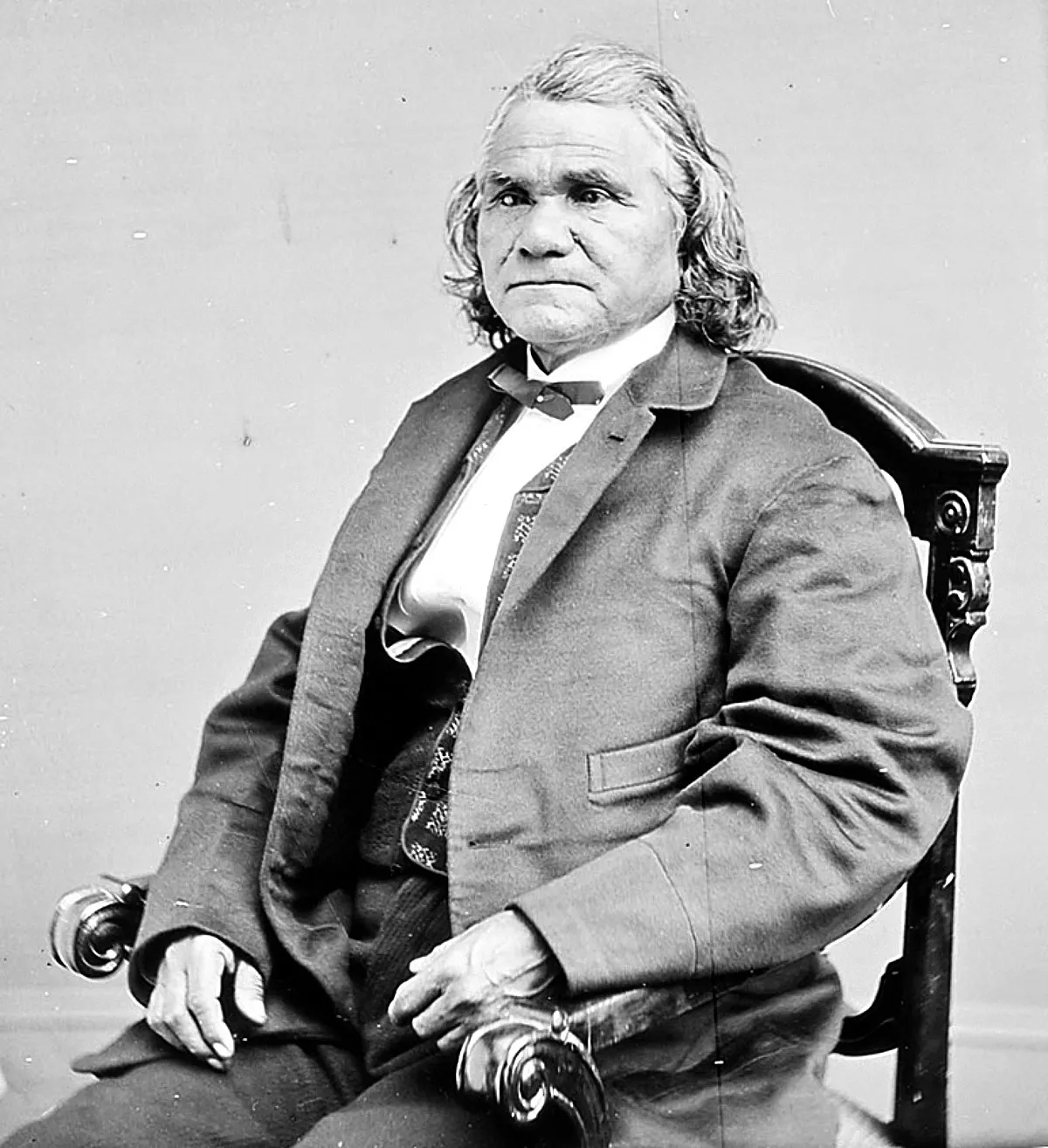 1.
1. Stand Watie was the last Confederate States Army general to surrender.

 1.
1. Stand Watie was the last Confederate States Army general to surrender.
Stand Watie was acquitted by the Cherokee at trial in the 1850s on the grounds of self-defense.
Stand Watie led the Southern Cherokee delegation to Washington, DC, after the American Civil War to sue for peace, hoping to have tribal divisions recognized.
Stand Watie stayed out of politics for his last years, and tried to rebuild his plantation.
Stand Watie was born on December 12,1806, at Oothcaloga, Cherokee Nation, the son of Uwatie, a full-blood Cherokee, and Susanna Reese, daughter of a white father and Cherokee mother.
Stand Watie's brothers were Gallagina, nicknamed "Buck", and Thomas Stand Watie.
Stand Watie occasionally helped write articles for the Cherokee Phoenix newspaper, for which his older brother Elias served as editor from 1828 to 1832.
Stand Watie became involved in the dispute over Georgia's repressive anti-Indian laws.
Stand Watie arranged for his brother Elias' children to be sent for their safety and education to their mother's family in Connecticut; their mother Harriet had died in 1836 before the migration.
In 1842, Stand Watie encountered James Foreman, whom he recognized as one of his uncle's executioners, and killed him.
Stand Watie pushed for recognition of a separate "Southern Cherokee Nation", but never achieved that.
Stand Watie was the only Native American to rise to a Confederate brigadier-general's rank during the war.
Under the overall command of General Benjamin McCulloch, Stand Watie's troops captured Union artillery positions and covered the retreat of Confederate forces from the battlefield after the Union took control.
Stand Watie was appointed to the grade of Brigadier-General on May 10,1864, with a date of rank of May 6, though he did not receive word of his promotion until after he led the ambush of the steamboat JR Williams on July 16,1864.
Stand Watie commanded the First Indian Brigade of the Army of the Trans-Mississippi, composed of two regiments of Mounted Rifles and three battalions of Cherokee, Seminole and Osage infantry.
Stand Watie took part in what is considered to be the greatest Confederate victory in Indian Territory, the Second Battle of Cabin Creek, which took place in what is Mayes County, Oklahoma on September 19,1864.
Stand Watie's forces massacred black haycutters at Wagoner, Oklahoma during this raid.
On June 23,1865, at Doaksville in the Choctaw Nation, Stand Watie signed a cease-fire agreement with Union representatives for his command, the First Indian Brigade of the Army of the Trans-Mississippi.
Stand Watie was the last Confederate general in the field to surrender.
In September 1865, after his demobilization, Stand Watie went to Texas to see his wife Sallie and to mourn the death of their son, Comisky, who had died at age 15.
Stand Watie was a shrewd and politically savvy Principal Chief, bringing about reconciliation and reunification among the Cherokee.
Stand Watie tried to stay out of politics and rebuild his fortunes.
Stand Watie returned to Honey Creek, where he died on September 9,1871.
Stand Watie was buried in the old Ridge Cemetery, later called Polson's Cemetery, in what is Delaware County, Oklahoma, as a citizen of the Cherokee Nation.
One source states that Stand Watie married four women: Eleanor Looney, Elizabeth Fields, Isabella Hicks, and Sarah Caroline Bell.
Stand Watie's child with Elizabeth Fields was stillborn in 1836.